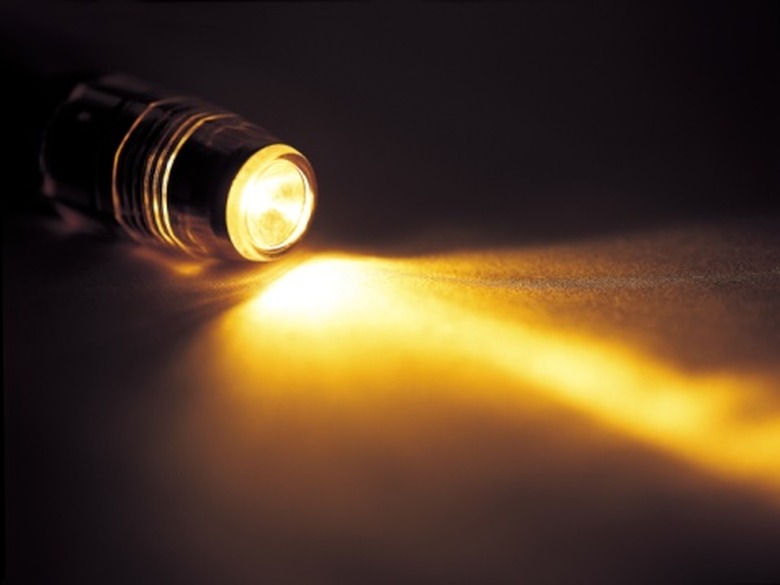How To Make A Potato Lightbulb For A Science Project
Using a potato to power a small lightbulb demonstrates the principles of conductivity and how chemical energy converts to electrical energy. Inserting zinc nails and pennies into a potato, and connecting them to a small flashlight battery creates a simple circuit that can transfer approximately 1.5 volts.
Step 1
Cut a large potato in half. Cut a slit large enough to insert a penny, in both halves of the potato. Insert a zinc nail in both halves of the potato, opposite the penny. The electrolytes contained in the flesh of the potato will allow electrons to pass from the zinc to the copper.
Step 2
Wrap two pennies in copper wire, and place one in each half of the potato. Wrap the wire from one of the pennies around the zinc nail, in the other half of the potato. Wrap the third piece of wire around the other zinc nail.
Step 3
Touch the remaining ends of the wires — trailing the penny and the nail — to the base of the lightbulb. Do not touch the two wires together. The potato will power the bulb for one to two minutes. After a short time, the electrodes inserted in the potato undergo a chemical reaction that diminishes the flow of electrons, halting the transfer of power to the bulb.
Things Needed
- Utility knife
- One large potato
- Zinc-coated nails
- Pennies
- 16-gauge wire
- Small flashlight bulb
Cite This Article
MLA
Andrews, A.J.. "How To Make A Potato Lightbulb For A Science Project" sciencing.com, https://www.sciencing.com/make-potato-lightbulb-science-project-7940834/. 24 April 2017.
APA
Andrews, A.J.. (2017, April 24). How To Make A Potato Lightbulb For A Science Project. sciencing.com. Retrieved from https://www.sciencing.com/make-potato-lightbulb-science-project-7940834/
Chicago
Andrews, A.J.. How To Make A Potato Lightbulb For A Science Project last modified August 30, 2022. https://www.sciencing.com/make-potato-lightbulb-science-project-7940834/
